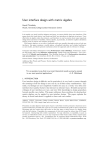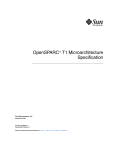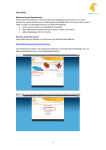Download User Manual The Journal Club - JBI Journal Club
Transcript
User Manual The Journal Club TABLE OF CONTENTS Table of Contents........................1 Your Journal Club: Getting Started........................................2 Search Results – existing member found...................................................21 Search Results – no existing Journal Club users found..............................21 About Journal Club.....................4 Invite Clicked......................................22 Home/Login Page........................4 Member Account Activation.....23 JBI Journal Club access denied page.5 User has clicked on “Activate my account” from their email invite.....23 Forgot your Password?.....................5 Setting Up Your Profile.......................6 Session Selection.....................25 My Contacts................................6 Journal Club Session Members.......25 New Session...............................7 New Session - ADVANCED USER.............7 New Session – Journal Article Report...................................................7 Data extraction for Intervention studies................................................11 Data extraction for an Experience (qualitative) study.............................12 Journal Club Session – Starting the Discussion...........................................25 User has clicked Post Comment button.................................................26 Appendix I: Understanding the appraisal questions..................26 Prognostic Studies...........................26 Risk Studies.........................................27 Data extraction for a Prognosis study...................................................13 Intervention Study............................28 Data extraction for a Risk study....14 Experience Study................................32 Data extraction for a Cost (economic) study................................15 Diagnostic study................................33 Cost Study..........................................29 Systematic Review..............................35 Data extraction for a Diagnostic study...................................................16 Data extraction for a Systematic Review..................................................17 Inviting Members to join a JBI Journal Club Session................20 Journal Club – JBI 1 Your Journal Club: Getting Started About Journal Club Welcome and “about” information Home/Login Page To save time bookmark this page in your web browser then you can conveniently return to the Journal Club log in page at any time. Enter your username and password, or use the retrieve password functions if necessary. If your using a shared computer in the public domain, we recommend you do not select “Remember me next time” or your password will become available for any other user of that computer. 2 JBI – Journal Club JBI Journal Club access denied page In the unlikely event that you see the “Access Denied” page, it does not mean there is a problem with your log in, it may just mean you need to email us to confirm your authentication. Please DO contact JBI by clicking the link <Contact Us> illustrated in the image below if you see this screen. Forgot your Password? It happens to us all occasionally! Just return to the home (log in) screen and use the forgotten password function. Journal Club – JBI 3 Setting Up Your Profile As you do with computers and mobile phones, JBI Journal Club works better if you take a few minutes to set it up first. It only takes a minute or two, and requires minimal data input from you; the system is then ready to go! You can also change your profile details at any time by logging back in and choosing the profile menu item. 4 JBI – Journal Club New Session New Session - ADVANCED USER Start a session by creating a session name. Often these are based on the topic area, so if you know your topic area of interest, even if you have not chosen a paper yet, call it that topic. Then pick your paper and load either a pdf of the paper, or a URL (that’s a web address) for the full paper (Don’t do both, one is enough). Once you have done that, your ready to start the session. Journal Club – JBI 5 New Session – Journal Article Report You have started a new session, given it a session name, and selected an article for discussion. JBI Journal Club is designed to facilitate your assessment of the quality of a paper and provide a framework for the extraction of data on relevant clinical outcomes. The next few steps describe how to do this, and as you do, the Journal Club software will prepare and format the report that supports and informs your Journal Club discussion for you. Firstly, extract the “Citation” details. This means the authors, the title of the paper, the year it was published, the name of the journal, and where available, the Volume, Issue and page number (this is the first page of the article). Not all journals report an issue number in the article, so you can leave this field blank. The ‘Study Design’ drop down is important! Read the paper, confirm what type of study it is, then select from the drop down list. The table of study designs listed below will help with choosing a study design. There is a brief operational definition for study designs in Appendix I that may also be helpful. 6 JBI – Journal Club Table 1: Study designs in JBI Journal Club Intervention These are studies on the effects or effectiveness of health care practices or technologies on patient outcomes. The data is always numeric. Randomised Controlled Trials, with or without blinding Qualitative research Phenomenology, Grounded Theory, Ethnography, Participatory Action Research, Feminist Inquiry, Historical Research, Philosophical Research, and Critical Social Theory These are studies on experiences, perceptions, culture, or understandings. The data of interest is always textual descriptions, not numbers. Economic These are studies on costs, or cost associated measures of quality Cost Benefit, Cost Utility, Cost Minimisation, Cost Effectiveness Prognosis These are studies that attempt to determine the effect of prognostic (risk) factors on the outcome of disease or injury Cohort, Case Control Risk These are studies that examine the cause or origin of a disease. They answer the question about risk of exposure to a particular disease. Cohort, Case Control Diagnosis These are studies that examine the accuracy and reliability of diagnostic tests. Systematic Review/Meta analysis Cohort, Case Control Quantitative Systematic Review of Randomised Controlled Trials (with or without Meta analysis) Choosing the study design ends step 1. The study design forms a heading in subsequent steps to further clarify the choice of study type. The very next step is based on your choice of study type here, so take the time to confirm your choice! Journal Club – JBI 7 With the study design selected, it is now time to evaluate the quality (Internal Validity) of your chosen paper. Tool tips are available for many of the fields in the appraise and extract steps. Appendix I to this Quick Reference Guide also contains a comprehensive description of each appraisal question for each study design, it might be helpful to print those pages out as you go through this step in JBI Journal Club. Not every paper will be a ‘yes’ or ‘no’ response, sometimes its better to put ‘unclear’, or if you think a question has less relevance, choose ‘N/A’. Once this is complete, use the drop down menu to choose whether the paper is of good quality, poor quality, or could be used with caution. 8 JBI – Journal Club Data extraction for Intervention studies Please complete the following steps: • Describe the type of study eg. RCT, pseudo RCT etc. • Describe the total number of study participants and include all relevant characteristics such as number, gender, co-morbidities and study setting. • Describe the interventions being compared; up to three interventions can be documented. A range of outcomes can be detailed. • In the box titled ‘dichotomous data’, details of outcomes where an event rate is provided should be documented; that is, there is a number that had the outcome present/number that received the specific intervention. For example if 30 patients received intervention 1, and 5 had the outcome of infection, then 5/30 would be documented in the box for the first outcome and intervention 1. • For continuous data a mean and standard deviation are required with the number receiving that intervention in brackets. Document p values for each outcome measure. Journal Club – JBI 9 Data extraction for an Experience (qualitative) study Please complete the following steps: • Describe the study in terms of the following elements: the methodology, method of data collection and method of data analysis used to derive findings or themes. • Describe in detail the study setting and any relevant geographical and/or cultural issues. • Document the number of participants and describe relevant characteristics of the group. • Interventions/Phenomena of interest should be described. • All major findings of themes should be described. Each theme, metaphor or concept that you “extract” (that is write down) should also be accompanied by a relevant illustration (that is a quote from a participant in the research study which relates to the specific theme, metaphor or concept. 10 JBI – Journal Club Data extraction for a Prognosis study Please complete the following steps: • Describe the study participants and include all relevant characteristics such as number, gender, co-morbidities and study setting. • Detail the disease/condition of interest and the outcomes to be predicted. If more than one disease/condition use the additional text boxes. • Name the disease/condition and the relevant outcome. Include the time to the event if relevant and the percentage of patients with the outcome. • State the 95% confidence interval if known. Indicate for each of the outcomes if they are independent. Journal Club – JBI 11 Data extraction for a Risk study Please complete the following steps: • Describe the study participants and include all relevant characteristics, such as number, gender, co-morbidities and study setting. • Detail in ‘exposure’ the risk factor of interest and in ‘outcome’ the disease or condition relating to the exposure. • In the outcomes box name the disease/condition. • Fill in the results of the study as far as possible. As a minimum you must have the number of subjects exposed that had the disease/condition present and those who did not and those that were not exposed to the risk factor and again had the disease/condition present and those who did not. 12 JBI – Journal Club Data extraction for a Cost (economic) study Please complete the following steps: • Describe the study participants and include all relevant characteristics such as number, gender, co-morbidities and study setting. • All economic evaluations are taken from a given perspective, e.g. the patient, the service provider etc; this should be documented. • Document the currency and the study date. Up to three interventions can be listed. • The source of the effectiveness data is documented, and may be derived from a primary concurrent study or even a meta-analysis combing a number of studies. • The measure of benefit should be included if this is available (lower level studies may not have a measure of benefit). • Details of the clinical effectiveness of the intervention/s should be documented. • Items that were included in direct and indirect costs should be described. • In the outcomes table the comparative costs should be listed and the benefits where appropriate. • Details of cost benefit synthesis should be given as appropriate. Journal Club – JBI 13 Data extraction for a Diagnostic study Please complete the following steps: • Describe the study participants, and include all relevant characteristics such as number, gender, co-morbidities and study setting. • Describe the disease/disorder that is being diagnosed. • Document the ‘gold standard’, the measure or criteria that determines a true diagnosis. Describe the test of tool being tested. • In the outcomes table, as a minimum include the number of subjects that had the disease/disorder present and were tested as positive or negative, and also those who did not have the disease/disorder. • Complete in the boxes provided any additional results you can. 14 JBI – Journal Club Data extraction for a Systematic Review Please complete the following steps: • Enter the type of study that has been used in the systematic review e.g. Randomised controlled trial, or quasi-experimental design. • Describe the study setting in detail (institution, city, country). • Describe the intervention and the control or placebo being compared. • Only enter outcomes that are relevant to your interest. For example, if your interest is in the effectiveness of propofol versus midazolam in maintaining sedation in adult ventilated patients in the intensive care unit. Only include outcomes specifically about sedation. • For each relevant outcome, enter one or more outcome measures. For the above example, an outcome measure might be the Ramsey sedation scale. There are two different categories into which data can be entered; dichotomous, the sort of data that is either one or the other, i.e. yes/no, or continuous, the sort that uses a scale for its outcome, such as weight, blood pressure, pulse. • For dichotomous data enter the number that had the outcome present/number that received the specific intervention. For example if 30 patients received intervention 1 and 5 had the outcome of infection then 5/30 would be documented in the box for the first outcome and under Intervention. The same needs to be done for Control/Placebo. Extract further data from the systematic review (if it is present). Enter the Peto Odds Ratio, Confidence Interval (CI-%), Chi Square (degrees of Freedom), and the P value. • For continuous data, enter the Weighted Mean Difference (WMD), Confidence Interval (CI-%), Chi Square (degrees of Freedom), and the P value. Journal Club – JBI 15 Once extraction is complete click the <NEXT> button and JBI Journal Club will load the final screen. This is where you, having read the papers discussion and conclusions summarise what the author concludes about their findings. There are also fields for you to describe the strengths and weaknesses of the papers internal validity (quality). Additionally, you may either support or challenge the authors conclusions or interpretations as being either appropriate for the study design and implementation, or you can indicate that you think the author got it wrong, and describe why you think that is the case. The last three fields relate to the applicability of the paper. There are no set rules on what to document, consider how these fields relate to your purpose in initiating the journal club session, who the members of your journal club session are and what aspects of practice and/or policy are covered by the paper. If the paper seems relevant from a learning perspective, but has low relevance to clinical practice or policy, state this and make it a focal point of the discussion sessions on the paper. Free text fields (without character limit) are available for the author conclusions and appraiser conclusions relating to the paper. 16 JBI – Journal Club Once all steps are completed the Generate option is available. The generated report is viewable in PDF and can be viewed (and printed) by all members of the journal club from the PDF. Members of a Journal Club are now able to log in, read the paper, your Journal Club Report on the paper and start the discussion. These two documents form the basis of the discussion. Many Journal Clubs meet face to face, or you can use the online discussion forum built in to the JBI Journal Club process, and have an on-going record of each session archived for you. The discussion can not start until you have ‘Invited’ members to participate! The following section of this user guide provides the detail on how to invite members, or if you are familiar with this already, you can skip this section. Journal Club – JBI 17 Inviting Members to join a JBI Journal Club Session Invites are only sent by the Journal Club Session Chair. Members can either remove themselves, or be removed from a session by an advanced user who is the Journal Club Session Chair. • Members who are removed from a specific Journal Club Session will remain part of any other sessions that belong to the Journal Club Members of any permission level can remove themselves from a session • Except if they are the Chair of that Session. To set up your session membership, click the <Invite Members> link on your session and enter a valid email. • Must enter a valid email address and then click “Search” 18 JBI – Journal Club Search Results – existing member found Any existing JBI Journal Club members with that email address will be listed in the search results page. • This means the user has previously logged in and filled out their profile. Journal Club – JBI 19 Search Results – no existing Journal Club users found • If there are no results, the person you invited has not previously created a profile in JBI Journal Club. There is an option to email an invitation to ‘new’ members. • To send an invite to the Journal Club click “Invite [email] to this Journal Club” • Members (both existing and non existing) who have already been sent an invite for another session in the same Journal Club will be highlighted as “Invitation already sent”. 20 JBI – Journal Club Invite Clicked There is a default template for inviting members. The template will add your name (based on your profile) as the sender • Existing Journal Club members will simply be asked to login to the Journal Club • Non existing members will be sent an activation link containing extra instructions • All invited Members will appear under “My Contacts” as “pending” – Users will be pending until they log in/activate their account Journal Club – JBI 21 Member Account Activation Members must activate or confirm their account before they can participate in a Journal Club Session. This may be via the email invitation, and if from an existing JBI COnNECT+ member, the log in username and password are the same as your JBI membership username and password. User has clicked on “Activate my account” from their email invite VERY IMPORTANT: Existing JBI COnNECT+ members must login rather than go through account activation. Account activation should only be used by non-members. Existing JBI COnNECT+ members who have been invited via email will be linked to the invites (as long as they enter the same email address that the invite was sent to.) They simply need to login at the main screen and fill out their profile. Completing the activation form as illustrated in the following graphic does the following: 1. C reates a Profile in the Journal Club with the First Name, Last Name, Email, Location details 2. S ets the “Pending User” as Account Activated (see below) 3. A utomatically adds the user to each journal club they have been invited to 4. A utomatically adds the user to each “Current” (non archived) Session in each Journal club they have been invited to 5. A utomatically logs the user into the Journal Club using their newly created username/password 6. Takes the user to the Home screen 22 JBI – Journal Club Journal Club – JBI 23 Session Selection Journal Club Session Members Members are people who have been invited via email to Join a JBI Journal Club Session, have responded to the email and created a profile are now ready to join the session. This is done by clicking on the title of the session from their list of available sessions. Selecting from the left hand column of sessions will load the selected session and the <Post Comments> button that activates the discussion. • Only “Discussion Started” sessions are available to Journal Club Members 24 JBI – Journal Club Journal Club Session – Starting the Discussion When an invited Journal Club Session Member has clicked “Start Discussion” on an existing Session. • They are automatically added to the members • The Session Chair can no longer edit the session – Sessions can be “Closed” (archived) at any time User has clicked Post Comment button This is also a timely opportunity to commence the discussion section. You may need to be the initiator, and make the first post. • Comments can be deleted if: – Comment was made by the person who is logged in OR – The person who is logged in is the Chair of the session Journal Club – JBI 25 Appendix I: Understanding the appraisal questions Prognostic Studies As Mak and Kum (2005) in the World Journal of Surgery described them, prognostic studies include specific characteristics and have a particular purpose that helps in identifying whether the study you are reading is a prognostic study or not. Prognostic studies are studies that examine selected predictive variables or risk factors and assess their influence on the outcome of a disease. They allow clinicians to understand better the natural history of a disease, guide clinical decision-making by facilitating the selection of appropriate treatment options, and allow more accurate prediction of disease outcomes. Appraising prognostic studies involves determining the internal validity of the study design and evaluating the influence of systemic errors or bias. In studies examining multiple prognostic variables, care must be taken to minimize the confounding influence each variable would have on the other parameters. Evaluating the results of appropriate statistical analysis enables conclusions to be made that may influence clinical practice. Care must be taken to ensure that the conditions under which the prognostic study were conducted resemble circumstances in the local institution so as to allow the conclusions to be applied to local practices. The choice of study method is appropriate Indicators: usual types of studies include cohort/survival studies. The population studied is appropriate Indicators: the population is sufficiently broad in representation. Relevant variables include age, sex, ethnicity, culture, and socio-economic status. The comparison group used was appropriate Indicators: if a comparison group is receiving an alternative therapy, this group is otherwise sufficiently similar so as to act as a control for the comparison. A type 1 and/or type 2 error and risk of bias has been considered. All possible effect explanations are acknowledged Indicators: the study addresses any additional factors that may impact on the outcomes. Do events unfold similarly for both control and intervention group throughout the study – i.e. were there any uncontrolled factors that influenced one group differently to the other group? 26 JBI – Journal Club The outcomes are objectively measured Indicators: where possible, those measuring the outcome(s) were blinded to the subject’s clinical characteristics or treatment group. An even more rigorous approach is ‘double-blinding’, when both subject and investigator do not know to which treatment group the subject is allocated. The duration of follow-up was adequate Indicator: the follow-up was for a period that would allow the outcomes to occur. The effect was sufficiently long term Indicator: the effect or outcome measures are not inconsequential. The dropout rate was not significant. Indicator: generally a drop out rate of 5% or less is considered insignificant. A drop out rate of 20% or greater is considered to significantly impact on the validity of the study. The rate of patient follow up was adequate. Indicator: at least 80% of patients were followed up. Risk Studies Studies of risk examine the cause or origin of a disease in relation to an exposure The choice of study method is appropriate Indicators: usual types of studies include cohort or case control. The population studied is appropriate Indicators: the population was sufficiently broad in representation. The control group used was appropriate Indicators: the comparison group was determined to be sufficiently similar at baseline. All possible effect explanations are acknowledged Indicators: the study addresses any additional factors that may have impacted on the outcomes. The outcomes are objectively measured Indicators: those measuring the outcome were, where possible, blinded to the patient’s clinical characteristics. Journal Club – JBI 27 The duration of follow-up was adequate Indicators: the follow-up was for a period that would allow the outcomes to occur. The effect was sufficiently long term Indicators: the effect or outcome measures were not inconsequential. The dropout rate was not significant Indicators: Generally a drop out rate of 5% or less is considered insignificant. Arate of 20% or greater is considered to significantly impact on the validity of the study. The rate of patient follow up was adequate Indicators: At least 80% of patients were followed up. Intervention Study An intervention study is a randomised controlled trial that tests the effects of an intervention against a specific clinical outcome. As Sibbald and Roland (1998) in a BMJ publication indicated, properly designed randomised controlled trials are the most rigorous way of determining whether a cause-effect relation exists between treatment and outcome and for assessing the cost effectiveness of a treatment. Sibbald and Rolland (1998) go on to describe the key features and benefits. Random allocation ensures no systematic differences between intervention groups in factors, known and unknown, that may affect outcome. Double blinding ensures that the preconceived views of subjects and clinicians cannot systematically bias the assessment of outcomes. Intention to treat analysis maintains the advantages of random allocation, which may be lost if subjects are excluded from analysis through, for example, withdrawal or failure to comply. The patients were randomised to study groups Indicator: the method of patient allocation is detailed sufficiently to demonstrate that it was without bias. Note that in some cases, full randomisation might be either unfeasible or inappropriate for the intervention of interest. Allocation to treatment groups was concealed from the allocator Indicators: the person allocating each participant to treatment groups was unaware of which participant was allocated to which group, in an attempt to eliminate selection bias. Other than for the intervention/s of interest, participants were treated the same Indicators: there were no additional treatments given to one group in comparison to another, apart from that treatment being tested. 28 JBI – Journal Club The groups were comparable at entry Indicators: there were no measurable differences in the characteristics of the different treatment groups. For example, in the examination of a new wound dressing, it is not appropriate to have a treatment group of young, healthy participants, and a control group of elderly participants with peripheral vascular disease. The outcomes were measured in the same manner for all participants Indicators: There was no difference in the way participant outcomes were measured. Participants cannot be compared if outcomes are measured differently between the groups. Those assessing outcomes were blinded to the treatment allocation Indicators: those assessing participant outcomes were unaware of the treatment group that the participants were allocated to. Concealing allocation from the assessors further reduces the chances of bias. In certain situations it may be impossible to blind the assessor to the treatment allocation. The outcomes were measured in a reliable manner Indicators: a recognised, validated tool was used for measuring the outcomes. For example, when measuring a patient’s level of consciousness, the Glasgow Coma Scale is a widely recognised tool. The statistical analysis used was appropriate for the data presented Indicators: there are a variety of statistical analyses available; the one(s) chosen were appropriate to the data being presented. The dropout rate was not significant Indicators: generally a drop out rate of 5% or less is considered insignificant. Arate of 20% or greater is considered to significantly impact on the validity of the study. The rate of patient follow up was adequate Indicators: at least 80% of patients were followed up. Cost Study Cost studies may investigate methods to reduce or minimise costs (cost minimisation studies). They may also investigate what the direct costs of an intervention are (cost utility), or measure the comparative costs of two interventions to see which is cheaper and/or better (cost benefit). Comprehensive analyses of costs are more complex in their reporting of the balance between costs and outcomes as determined by Quality Adjusted Life Years (cost effectiveness). Journal Club – JBI 29 The question is well defined Indicators: is it clear what interventions/programs and outcomes will be examined in terms of cost effectiveness? Many economic studies are conducted in conjunction with clinical trials. The economic evaluation may relate to all or only part of the trial conducted. The research question stated in the paper often relates to the primary clinical trial and not the economic evaluation. There is a comprehensive description of alternatives Indicators: all interventions subject to the economic evaluation must be comprehensively described. Some interventions can be administered in a variety of ways that will impact on cost. Consider issues of duration and frequency of the intervention and mode of delivery, including level and type of practitioner. Consider if a ‘do nothing’ alternative is appropriate. All important and relevant costs and outcomes for each alternative are identified Indicators: in delivering even a single simple intervention there are a variety of direct and/or indirect costs incurred. An intervention may also result in benefit that reduces cost. An example of an ‘avoided’ cost is an intervention that reduces the rate of infection and subsequently reduces the cost of managing the infection. Consider costs to the health provider, the individual receiving the intervention and potentially the individual’s family also. Clinical effectiveness has been established Indicators: any measure of clinical effectiveness used in the economic evaluation of clinical effectiveness. It may be that one alternative clinical intervention is more effective than another or that both are equally effective. Either way, examine the evidence to support this position. If this evidence is based on a concurrently run clinical trial then the report should provide enough information to appraise the quality of the trial. If the evidence is derived from a systematic review, then make a judgment about the quality of the review if possible. Costs and outcomes are measured accurately Indicators: a description is given of how costs were derived. Any items included in the costing should have the ‘price’ or cost per unit reported separately from quantities used. This will assist in making judgments about the accuracy of measures. Consider the appropriateness of the physical units costed. Were they actual costs or estimates based on modeling? If costs were estimated, is the method logical? 30 JBI – Journal Club Costs and outcomes are valued credibly Indicators: the value of a cost or an outcome may vary depending on the perspective used to derive the value. In considering the outcome of pain, for example, this may be valued in terms of the cost of analgesia (provider’s perspective). For the patient the emphasis is more likely to relate to the physical and emotional impact of pain. Costs and outcomes are adjusted for differential timing Indicators: some interventions are ongoing and can incur costs into the future. Costs may be expected to change over time and therefore must be adjusted or ‘discounted’ to their value at the time of the intervention. There is an incremental analysis of costs and consequences Indicators: in some cases it is appropriate to use the average cost of an intervention, and in other cases the marginal (additional) cost of providing the intervention is more appropriate. The incremental cost is determined by establishing the difference between the marginal costs and consequences of the alternative interventions. If this approach is taken it must be justified. Sensitivity analyses were conducted to investigate uncertainty in estimates of cost or consequences Indicators: in some economic evaluations, certain costs and consequences are estimated on values that may vary over a range or have some degree of uncertainty. These elements in the evaluation are estimated using various assumptions. A sensitivity analysis is conducted to test the robustness of the result of the evaluation by varying these underlying assumptions. Study results include all issues of concern to users Indicators: this issue in part relates to perspective, and the interests of all stakeholders must be considered. There may be important ethical and cultural considerations. The results are generalisable to the setting of interest in the review Indicators: economic evaluations are conducted within a given context, taking into account a given population, healthcare setting, time and other elements that can impact on the generalisability of the results. In considering the clinical question that prompted the review of the economic evaluation, these elements must be considered in determining how widely the results can be used. Journal Club – JBI 31 Experience Study These are qualitative studies. Qualitative studies are approaches to research that seek to inform or extend our understanding of how people experience. Greenhalgh (1997) in a very helpful paper published in BMJ outlined the following characteristics attributable to qualitative research: it aims to “study things in their natural setting, to make sense of, or interpret, phenomena in terms of the meanings people bring to them,” and uses “a holistic perspective that seeks to preserve the complexities of human behaviour.” There is congruity between the stated philosophical perspective and the research methodology Indicators: the report clearly states the philosophical or theoretical premise on which the study is based. The report clearly states the methodological approach adopted on which the study is based. There is congruence between the two. There is congruity between the research methodology and the research question or objectives Indicators: the study methodology is appropriate for addressing the research question. For all studies there will be one methodology that is most appropriate to answer the research question being posed. There is congruity between the research methodology and the methods used to collect data Indicators: studies that fall in the interpretive paradigm cover a variety of approaches and methods of data collection. The methods of data collection are appropriate to the study methodology. There is congruity between the research methodology and the representation and analysis of data Indicators: the data is analysed and represented in ways that are congruent with the stated methodological position. There is congruity between the research methodology and the interpretation of results Indicators: the research methodology is consistent with the methods used to interpret the data. For example, if the research methodology of phenomenology is used, the interpretation of the results is in line with traditional methods within phenomenology. 32 JBI – Journal Club There is a statement locating the researcher culturally or theoretically Indicators: the researcher’s cultural or theoretical background is clearly stated if it may have an influence on the study. The influence of the researcher on the research, and vice versa, is addressed Indicators: does the researcher have an effect on the results of the research? A statement on their position must be made. Participants and their voices are adequately represented Indicators: the authors use direct quotes of the participants to validate points that have been made. The research is ethical according to current criteria or, for recent studies, there is evidence of ethical approval by an appropriate body Indicators: there is a statement regarding the attainment of ethical approval. Conclusions drawn in the research do appear to flow from the analysis, or interpretation of the data Indicators: what is being concluded from the research is consistent with the data presented. Diagnostic study Diagnostic studies can be challenging to identify. One useful definition for diagnostic studies is that they are studies that assess how accurately a test distinguishes humans (or animals) having a condition or disease, from those who do not. Typically, the test under evaluation is called the index test and its results are compared to the results of the best available standard test (reference standard), which defines the condition or disease. (accessed online 26/09/2011; http://www.cochrane.org/ news/blog/embase-introduces-diagnostic-test-accuracy-study-indexing-term). The choice of study method is appropriate Indicators: in a diagnosis study the test results from a group of subjects affected by a clinical condition are compared to the test results from a normal group of subjects. The aim of a diagnosis study is to determine how readily the test results confirm the presence of the condition. The population is appropriate Indicators: the population is sufficiently broad in representation. Journal Club – JBI 33 The control group used was appropriate Indicators: if a comparison group is receiving an alternative therapy, this group is otherwise sufficiently similar. The most important feature of the control group is that they are free from the condition. The control group must be matched to the affected group in terms of known risk factors predisposing them to the condition. A type 1 and/or type 2 error and bias has been acknowledged Indicators: any Type 1 error is acknowledged and justified. Due consideration is given to the selection of the Type 1 error. A power analysis was conducted, using sample sizes large enough to detect differences that actually occur between the control and affected group. All possible effect explanations are acknowledged Indicators: the study addresses any additional factors that may impact on the outcomes. For example, in studies where a cut-off in a diagnostic value is used, is the calculation of the cut-off value objectively or subjectively assigned? Also, consideration must be given as to how each population was derived. If the affected population consists of people that are severely affected by the disease, the findings may not be applicable over a wide range of patients. The outcomes are objectively measured Indicators: Those measuring the outcome are where possible blinded to the patient’s clinical characteristics. Both study groups undergo the same treatment; i.e. both receive the diagnostic test and the reference standard evaluation. The diagnostic test is conducted and interpreted in ignorance of the results of reference standard and vice versa, i.e. the comparison is ‘blinded’. The duration of follow-up was adequate Indicators: the follow-up was for a period that would allow the outcomes to occur. The effect was sufficiently long term Indicators: the effect or outcome measures were not inconsequential. The drop out rate was not significant Indicators: generally a drop out rate of 5% or less is considered insignificant. A rate of 20% or greater is considered to significantly impact on the validity of the study. The rate of patient follow-up was adequate Indicators: at least 80% of patients were followed up. 34 JBI – Journal Club Systematic Review Its useful to start with an operational definition, although most people are probably comfortable with what a systematic review is.Helpfully, Trish Greenhalgh has written about this also. She stated in a 1997 BMJ publication that a systematic review is an overview of primary studies which contains an explicit statement of objectives, materials, and methods and has been conducted according to explicit and reproducible methodology. Question Well formulated Indicators: the question gives a clear understanding of what the review was trying to achieve. Clearly documented in the report Indicators: the question is clearly visible within the review report. This guides the review, and must be evident. Search Strategy Two-phase search strategy is described Indicators: a two-phase search strategy is the minimum requirement, and includes an initial search to establish appropriate search terms and a second search of all relevant databases. Phase 1 search terms appropriate Indicators: the search terms are specific to the topic in review. Phase 2 was relevant and exhaustive Indicators: the search strategy covers all aspects of the topic in review. Accessed a broad number of databases Indicators: the databases match the area of practice that is of concern, including all the major (broad) and minor (topic specific) databases. References and bibliographies were searched Indicators: this is clearly documented. Unpublished literature was sourced Indicators: the strategy for accessing unpublished literature is clearly defined. There is reference to languages searched Indicators: if studies using languages other than the reviewer’s first language are sourced, then they are documented. If not, then this is justified. Journal Club – JBI 35 Inclusion Criteria Describes who the target population were Indicators: this includes relevant demographic, disease/condition and intervention characteristics. Describes the intervention/s in detail Indicators: it is clear what intervention/s were being reviewed, and that they are appropriate for the patient group. Describes the outcomes in detail Indicators: all outcomes are stated and relevant to the interventions reviewed. States the study design/s Indicators: it is clearly stated what study designs were to be included and what level of study was considered as unacceptable. Describes the exclusion in detail Indicators: the decisions about the inclusion criteria are justified in terms of the objectives of the review and any exclusions are also justified. Critical Appraisal Method was appropriate Indicators: the criteria used are specific to the design of the included studies. Method clearly reported Indicators: the methods used in the report are stated. Any checklists or tools used are reported Indicators: all tools used are documented; this is often in the appendices. Determined by two independent reviewers Indicators: two independent reviewers have performed the critical appraisal process in an attempt to maintain consistency and eliminate bias. Data Extraction Methods were used to minimise errors Indicators: a recognised and agreed upon data extraction tool is used in an attempt to minimise errors, often in the appendices. Methods were clearly reported Indicators: all tools used are documented; this is often in the appendices. 36 JBI – Journal Club Double data entry by two independent reviewers Indicators: two independent reviewers have performed the data extraction process in an attempt to maintain consistency and eliminate bias. Data Synthesis Results from individual studies are reported in a narrative, tabular or statistical summary Indicators: if studies could not be pooled statistically, the results are clearly reported. The review question has been answered Indicators: the results of studies provide evidence that directly informs the review question. If meta-analysis was undertaken It was appropriate to combine studies Indicators: if studies were combined the study samples, interventions and outcomes are very similar (clinical homogeneity). The methods were appropriate Indicators: there are a variety of statistical methods available; their use is logical and appropriate. The methods were reported Indicators: the above methods used in meta-analysis are reported. Studies were tested for heterogeneity Indicators: this determines that the studies combined were sufficiently statistically similar. For All Studies Summarises major findings of review Indicators: any major findings of the review are summarised and included in the report. All issues of importance are addressed Indicators: the report includes all issues that are seen to be of importance. Limitations are acknowledged Indicators: the review includes a list of what are seen to be the limitations of the study. This then acknowledges what is lacking in the study, and makes the reader aware of these areas. Journal Club – JBI 37 All issues arising from review addressed Indicators: everything that was discovered from the review is included. If there are particular issues, it could disclose the need for further work. Implications for Practice Implications for practice identified Indicators: any recommendations for practice that have resulted from the review have been included Recommendations are clear and unambiguous Indicators: any recommendations that have resulted from the review are stated in a manner that is easy to understand, with little room for misinterpretation. Recommendations are supported by findings Indicators: the recommendations that have resulted from the review are clearly congruent with the findings presented. No major areas omitted Indicators: no area of the findings was left out of the recommendations for practice. Implications for Research Recommendations are clear and unambiguous Indicators: any suggestion for further research as a result of the review is clearly and explicitly stated. No major areas omitted Indicators: no area of the review was left out of the implications for further research. 38 JBI – Journal Club







































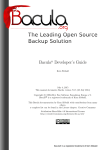
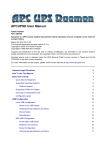

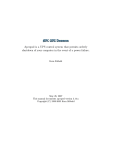


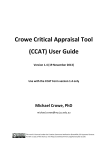

![AISER [USER MANUAL OF AISER] - Internet Banking](http://vs1.manualzilla.com/store/data/005712358_1-d8e4e34a51ac40b22276b6e3d3c9bbc0-150x150.png)
